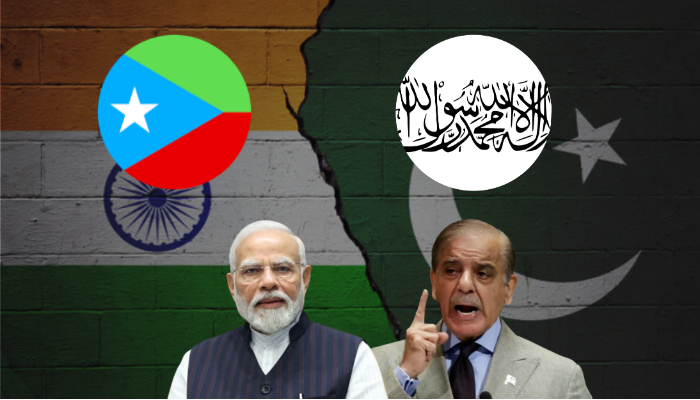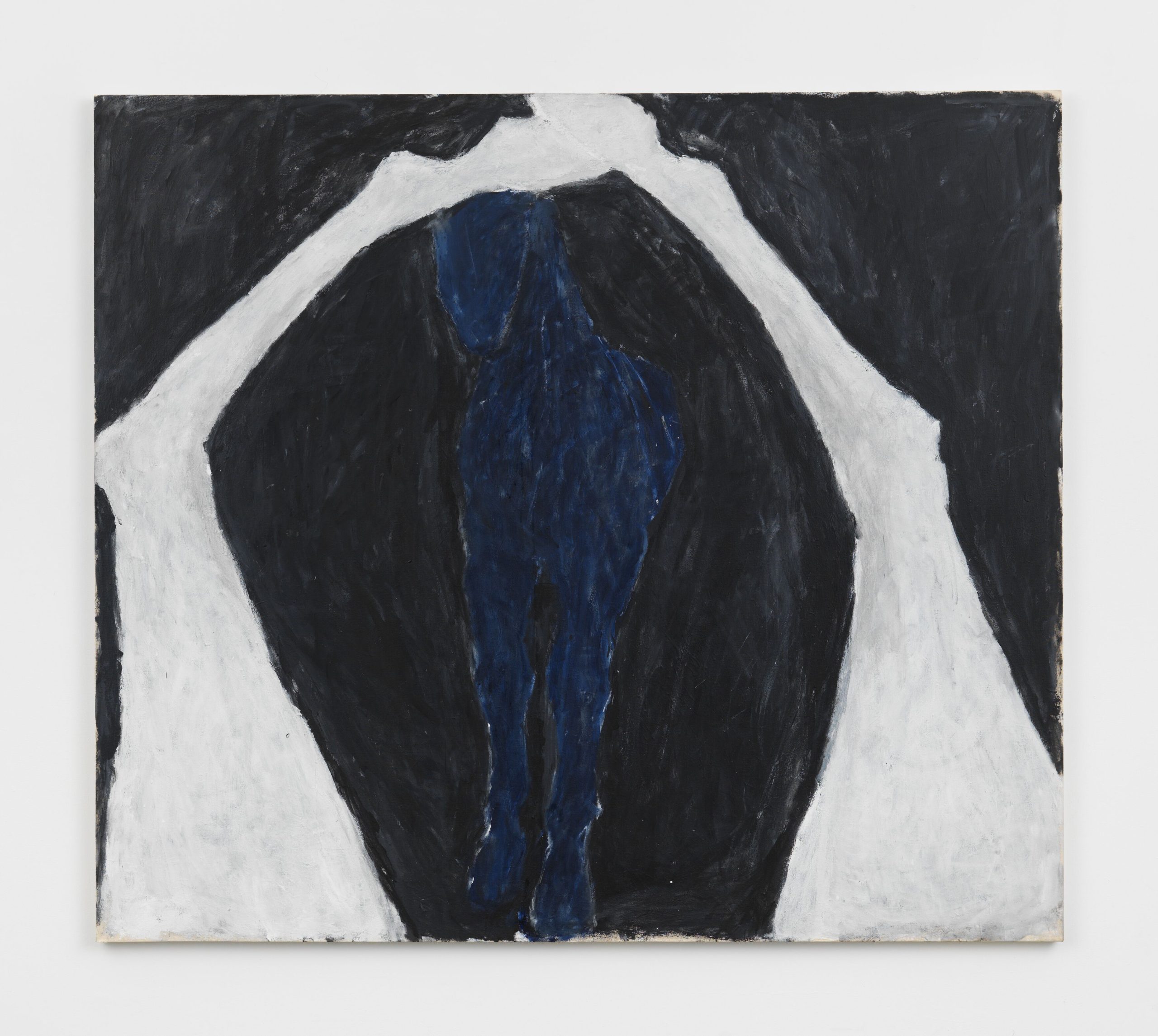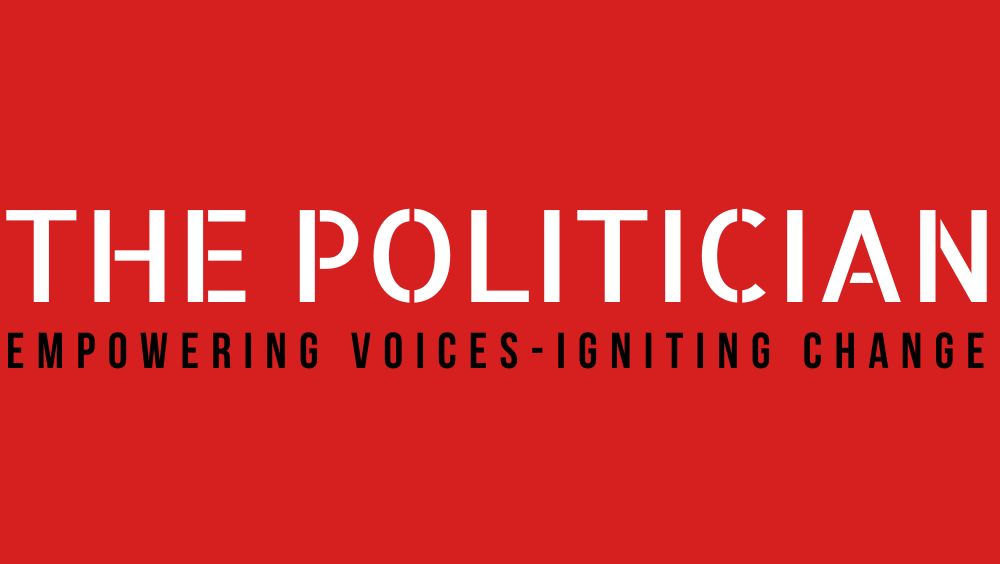Pakistan names Baloch rebel groups, TTP as “Indian proxies” after decades of funding anti-India terror groups in the name of Islam and Muhammad
“You can’t keep snakes in your backyard and expect them only to bite your neighbours. You know, eventually they are going to turn on whoever has them in the backyard.” While one may disagree with Hillary Clinton’s political views or her policies, her insightful remarks about Pakistan, made more than a decade ago, have consistently held true. Pakistan has repeatedly encountered the violent repercussions of its sinister strategies and actions designed to “bleed India by a thousand cuts” by fostering radicalism within its own territory. Terrorist groups, cultivated with the complete support of the Pakistani military, de facto owners of the country, have mushroomed in every part of the Islamic Republic. Terrorism has become the only consistent tool in the country’s foreign policy. However, in a striking illustration of “one who digs a pit for others falls into it themselves,” Pakistan has been experiencing the turmoil it intended for India and its neigbouring countries. Furthermore, as if leading the country into the deepest abyss of Islamic fundamentalism were not sufficient, they did not even spare its alleged regions especially, Balochistan which was forced into becoming a part of Pakistan. This area has been stripped of its natural wealth to benefit the Punjab province, leaving the indigenous population to endure poverty and suffering. When the people speak out against this oppression, they are branded as terrorists and face severe human rights abuses at the hands of the Pakistan army. Nevertheless, it would be not only naive but foolish to anticipate that Islamabad would reflect on its actions and rectify its course. Therefore, true to its track record, they resorted to blame India for the violence occurring within its borders, as usual, without any substantiating evidence. Pakistan has indeed mastered the art of accusing India for everything that happens within the country. This could either be a manifestation of their delusional mindset or a strategic ploy to draw attention to India, thereby diverting from their own wicked actions and given their national character, the second possibility appears more plausible. Pakistan’s attempt to paint Baloch rebels as “Fitna-al-Hindustan” Now, in the recent episodes of “Let’s blame India,” the country has amusingly decided to rename the Baloch rebel factions fighting for the independence of their exploited territory as “Fitna-al-Hindustan,” (loosely translates to creating trouble at the behest of India) as if this would change the reality. However, Pakistan is not genuinely concerned with the truth but rather with fabricating a false narrative to sell to its equally Islamist and anti-India population. “Keeping in view the involvement of some and groups in terrorist activities in Balochistan, at the behest of India (Hindustan), which are detrimental to Islamic faith and sovereignty of Pakistan, and customary traditions, it has been decided that, henceforth, all terrorist groups and organizations operating in Balochistan will be referred to as Fitna-al-Hindustan,” the ministry of interior and narcotics control officially declared on 30th June. “The change aims to reflect the true nature and ideology of these terrorist organizations and groups and nefarious designs of India (Hindustan) against the people of Pakistan,” the notification claimed. Earlier, Lieutenant General Ahmed Sharif Chaudhry following the school bus explosion in the Khuzdar distrcit declared that it was the result of “Indian state-sponsored terrorism,” as part of a larger conspiracy he dubbed “Fitna-al-Hindustan,” reported Republic. Pakistan has repeatedly spread the lie despite the lack of independent proof or evidence. The security establishment in Pakistan has officially adopted “Fitna-al-Hindustan” as a standard term for armed organisations operating in Balochistan for the past 12 months. It portrays them as pawns in a covert conflict with India, a position that New Delhi categorically refutes and lacks supporting data. The language seamlessly conforms to longstanding tendency among policymakers and conspiracy theorists to ascribe the manipulation of fault lines to shadowy foreign influences instead of acknowledging genuine domestic apprehensions when violence occurs in Balochistan. It was mainstreamed in 2025 after a series of high-profine incidnets including the hijacking of the Jaffar Express and wave of coordinated strikes Baloch insurgents known as “Operation Baam.” The narrative is obviously useful to Pakistan’s military. It switches focus from the province’s political and economic unrest by persuading the domestic audience to put aside the urgent problems at home and band together against a renowned adversary as a homegrown resistance is shrewdly presented as a component of larger strategic conflict. The evidence is nonexistent outside of Pakistan’s self-serving official pronouncements. Indian command-and-control over Baloch reb



“You can’t keep snakes in your backyard and expect them only to bite your neighbours. You know, eventually they are going to turn on whoever has them in the backyard.” While one may disagree with Hillary Clinton’s political views or her policies, her insightful remarks about Pakistan, made more than a decade ago, have consistently held true.
Pakistan has repeatedly encountered the violent repercussions of its sinister strategies and actions designed to “bleed India by a thousand cuts” by fostering radicalism within its own territory. Terrorist groups, cultivated with the complete support of the Pakistani military, de facto owners of the country, have mushroomed in every part of the Islamic Republic.
Terrorism has become the only consistent tool in the country’s foreign policy. However, in a striking illustration of “one who digs a pit for others falls into it themselves,” Pakistan has been experiencing the turmoil it intended for India and its neigbouring countries.
Furthermore, as if leading the country into the deepest abyss of Islamic fundamentalism were not sufficient, they did not even spare its alleged regions especially, Balochistan which was forced into becoming a part of Pakistan.
This area has been stripped of its natural wealth to benefit the Punjab province, leaving the indigenous population to endure poverty and suffering. When the people speak out against this oppression, they are branded as terrorists and face severe human rights abuses at the hands of the Pakistan army.
Nevertheless, it would be not only naive but foolish to anticipate that Islamabad would reflect on its actions and rectify its course. Therefore, true to its track record, they resorted to blame India for the violence occurring within its borders, as usual, without any substantiating evidence. Pakistan has indeed mastered the art of accusing India for everything that happens within the country.
This could either be a manifestation of their delusional mindset or a strategic ploy to draw attention to India, thereby diverting from their own wicked actions and given their national character, the second possibility appears more plausible.
Pakistan’s attempt to paint Baloch rebels as “Fitna-al-Hindustan”
Now, in the recent episodes of “Let’s blame India,” the country has amusingly decided to rename the Baloch rebel factions fighting for the independence of their exploited territory as “Fitna-al-Hindustan,” (loosely translates to creating trouble at the behest of India) as if this would change the reality.
However, Pakistan is not genuinely concerned with the truth but rather with fabricating a false narrative to sell to its equally Islamist and anti-India population.
“Keeping in view the involvement of some and groups in terrorist activities in Balochistan, at the behest of India (Hindustan), which are detrimental to Islamic faith and sovereignty of Pakistan, and customary traditions, it has been decided that, henceforth, all terrorist groups and organizations operating in Balochistan will be referred to as Fitna-al-Hindustan,” the ministry of interior and narcotics control officially declared on 30th June.
“The change aims to reflect the true nature and ideology of these terrorist organizations and groups and nefarious designs of India (Hindustan) against the people of Pakistan,” the notification claimed.
Earlier, Lieutenant General Ahmed Sharif Chaudhry following the school bus explosion in the Khuzdar distrcit declared that it was the result of “Indian state-sponsored terrorism,” as part of a larger conspiracy he dubbed “Fitna-al-Hindustan,” reported Republic. Pakistan has repeatedly spread the lie despite the lack of independent proof or evidence.
The security establishment in Pakistan has officially adopted “Fitna-al-Hindustan” as a standard term for armed organisations operating in Balochistan for the past 12 months. It portrays them as pawns in a covert conflict with India, a position that New Delhi categorically refutes and lacks supporting data.
The language seamlessly conforms to longstanding tendency among policymakers and conspiracy theorists to ascribe the manipulation of fault lines to shadowy foreign influences instead of acknowledging genuine domestic apprehensions when violence occurs in Balochistan.
It was mainstreamed in 2025 after a series of high-profine incidnets including the hijacking of the Jaffar Express and wave of coordinated strikes Baloch insurgents known as “Operation Baam.”
The narrative is obviously useful to Pakistan’s military. It switches focus from the province’s political and economic unrest by persuading the domestic audience to put aside the urgent problems at home and band together against a renowned adversary as a homegrown resistance is shrewdly presented as a component of larger strategic conflict.
The evidence is nonexistent outside of Pakistan’s self-serving official pronouncements. Indian command-and-control over Baloch rebel outfits has not been confirmed by any impartial inquiry conducted by major international news companies, the United Nations or other governments. The accusations have been consistently denied by Indian officials.
On the other hand, the local concerns that have driven the movement continuously are documented. The province has accounted for a significant portion of the thousands of missing-persons cases that Pakistan’s own Commission of Inquiry on Enforced Disappearances has been tracking since 2011. Advocacy groups like Human Rights Watch and Amnesty International detail a pattern of extrajudicial executions, arbitrary arrests and internet shutdowns.
Pakistani Taliban presented as Indian proxy “Fitna al Khwarij”
The resounding success of “Fitna-al-Hindustan” among its limited spectators, as no one believes them with a sane mind or in the outside world, transpired after the introduction of “Fitna al Khwarij” into the discourse, last year.
Khwarij (also known as Kharijites or Khawarij) referred to “those who left” or “the seceders” in relation to a group of early Muslims who disassociated themselves from the authority of fourth Islamic caliph.
This effort, even more ludicrous than their other one, aimed to portray the hardline extremist group Tehrik-e Taliban Pakistan (TTP) with links to Al-Qaeda leaders as an Indian proxy. Interestingly, a globally notorious Al-Qaeda leader, Osama bin Laden, responsible for the 9/11 attacks was provided refuge in Pakistan’s Abbottabad, prior to his elimination by the United States in 2011.
Nevertheless, such facts have never distracted Pakistan from their propaganda.
According to the Director General of Inter-Services Public Relations, the Indian proxy “Fitna al Khwarij” carried out the fatal attacks in multiple locations in northwest Pakistan that killed three civilians and twenty security officials on 10th and 11th October. The TTP claimed responsibility for the strikes which included a suicide bombing at a police training academy in Khyber Pakhtunkhwa.
The Pakistani media, as anticipated, promptly aligned itself with the directives of their military superiors and perpetuated the disinformation. Citing the Inter-Services Public Relations (ISPR), it claimed that Pakistani forces had killed over 200 Afghan Taliban and affiliated terrorists in self-defence action in response to an unprovoked overnight attack by the Taliban forces and the Tehreek-e-Taliban Pakistan (Fitna al-Khawarij) which is backed by India.
Notably, the TTP’s rise can be directly attributed to Pakistan. Pakistan relentlessly endorsed the Afghan Taliban since its founding in 1994 and utilised the group to increase its “strategic depth” against its main adversary, India, both militarily and geographically within Afghanistan.
The strategy failed spectacularly, however, the fact remains that Pakistan accepted American dollars under the guise of the “War on Terror” while simultaneously supporting the Taliban and even celebrated their return to power in 2021.
The Afghan Taliban and its struggle to restore the Islamic Emirate of Afghanistan inspired Pakistani jihadists in the tribal territories that bordered Afghanistan. Hence, the Afghan Taliban, Al Qaeda and a number of Pakistani terror organisations facilitated by the Pakistani government, including Lashkar-e-Taiba and Harakat ul Mujahidin, endorsed the creation of the TTP which seeks to form its own Islamic Emirate in Pakistan.
The TTP received strong assistance from Pakistani state-sponsored terror groups and the Afghan Taliban. Meanwhile, Islamabad was aware of the same. The TTP’s emir even announced that his organisation “is a branch of the Islamic Emirate of Afghanistan.” However, the Pakistani establishment persisted in aiding the Afghan Taliban to restore their government in Afghanistan to hurt New Delhi through them.
Moreover, like the scenario involving the Baloch rebels, Pakistan has only rhetoric to hold India accountable, devoid of any evidence or proof.
Meanwhile, India supplied a wealth of evidence regarding the role of Pakistani terror groups in numerous terrorist attacks in the nation, such as the major 26/11 strikes in Mumbai.
However, the Pakistani government upheld a defiant stance, consistently asserting a lack of evidence to evade responsibility for taking action against the terrorists it nurtured and used to attack India. They refused to take any measures against the dreaded terrorists who roam freely on their land.
Invoke Islam, form terrorist factions to launch “uncoventional war” against India
Pakistan understands that a direct confrontation with India would lead to its humiliation, a fact that has been demonstrated repeatedly including during “Operation Sindoor” and the four wars fought between the two sides. Therefore, the country devised an “ingenious” strategy to use religion to create an army of brain dead religious zealots prepared to attack India at the drop of a hat.
Jaish-e-Mohammad (Army of Muhammad), Lashkar-e-Taiba (Army of the Pure), Hizbul Mujahideen (Party of Islamic Holy Fighters) and several similar terrorist organizations that invoke Islam, its prophet and revered figures find haven in Pakistan under the protection of its government and military.
Their intention has been clearly to invoke religion, instill extremism and employ indoctrinated minds to carry out jihad (Islamic holy war) against the infidel state of India. While this phenomenon is observed worldwide, it does not negate the truth that every terrorist organization in Pakistan utilizes religion to excuse the killing of innocent Indians and the violence in the country.
More importantly, Pakistan is not only hand in glove with them but has also rejoiced in the terror attacks and celebrated the terrorists as heroes.
“In the 1990s, the freedom struggle began in Kashmir. At that time, Lashkar-e-Taiba and 11 or 12 other organisations were formed. We supported them and trained them as they were fighting in Kashmir at the cost of their lives. The Kashmiri freedom fighters including Hafiz Muhammad Saeed and Zakiur Rehman Lakhvi were our heroes at that time,” President General Pervez Musharraf disclosed in a 2015 interview.
“In 1979, we had introduced religious militancy in Afghanistan to benefit Pakistan and to push the Soviets out of the country. We brought Mujahideen from all over the world, we trained them and supplied weapons to them. We trained the Taliban, sent them in. They were our heroes. Jalaluddin Haqqani, Osama bin Laden and Ayman al-Zawahiri were our hero. Then the global environment changed. The world started viewing things differently. Our heroes were turned into villains,” he outlined.
Musharraf added that Pakistan provided Kashmiri terrorists alias Mujahideen with aid and training to fight the Indian Army in Jammu and Kashmir. Pakistan introduced religious terrorism in Kashmir on the grounds that a Muslim-majority state cannot be part of a Hindu-majority nation and thus should be surrendered to Pakistan. Many terrorist hits, including those in Pahalgam and Pulwama, were executed as part of the same policy.
“Humne Hindustan ko ghus ke mara hai wahaan pe. Pulwama main jo humari kamyabi hai, woh Imran Khan ki leadership mein is Qaum ki kamyabi hai (We entered India and killed. Our success in Pulwama, under the leadership of Imran Khan, is a victory of our community),” voiced former minister Fawad Chaudhry. He added, “Uske hissedar aap aur hum sab hai (all of us are party to it).”
“If Pakistan’s land, skies or waters are threatened, there will be no compromise. We tried to convey this with our tactical brilliance in Pulwama, and now we’ve shown our strategic skills too,” Pakistani Air Vice Marshal Aurangzeb Ahmed bragged while addressing media.
The notable presence of Pakistani political figures and senior military personnel at the funerals of terrorists neutralized during “Operation Sindoor” exemplified the same. Pakistan’s close association with terrorist groups was the key factor for its inclusion on the Financial Action Task Force (FATF) grey list until October 2022.
Accuse India for every conceivable issue, manipulate domestic audience
The act of blaming India for virtually everything in Pakistan is not a new trend. It is a tried and tested ploy utilized regularly by Pakistani leadership. Former prime minister Nawaz Sharif was charged with acting as an Indian agent. Similarly, Imran Khan has been projected as the darling of Indian and Israeli media with claims that his social media is controlled from India.
This shows how Pakistan has routinely sought to cast its neighbour as a convenient scapegate for its own shortcomings, to pursue political objectives and even when trying to appeal to the masses.
Additionally, nothing in Pakistan attracts attention like Islam and the rhetoric that is critical of Hindus and India. Hence, a highly volatile mix is formed when the three are combined that effectively manipulates a population which is already deficient in education and awareness.
Pakistan has been a monumental failure in providing industry, employment, technology, political stability and infrastructure, among other pivotal things but it has successfully sold the idea of hostility towards India and Hindus to its people in the name of religion. As a result, they have almost annihilated the Hindu demographic from their country and wish to achieve the same outcome in India.
Furthermore, Pakistan is not a true democracy with the reins of power concentrated in the military’s hands and politicians are obligated to toe its line. The animosity towards Hindu majority India serves as the foundation for the existence of the defence forces in Pakistan. Thus, the hatred is normalised and is a fundamental aspect not only of their army and political framework but a popular sentiment among the general populace.
This is the reason that even as Pakistan’s economy collapses, inflation skyrockets, the nation is forced to depend on foreign aid including International Monetary Fund (IMF) doll outs and terrorism infests the country, enmity towards India continues to be the collective main concern while its leaders accumulate riches and the common people are doomed to die in stampedes as they wait in long lines for flour.
The textbooks of the nation are a vivid example of how Pakistan brainwashes its youth from an early age for the sake of propaganda. The terrorist and radical outfits in Pakistan are likewise formed and sustained for the same cause. Now, the country point fingers at India while the very weapon it created and sharpened to attack the latter ended up wounding itself.
Similarly, if anyone stands up for their rights and demands accountability, such as the Baloch or the repeated uprisings in Pakistan-occupied Kashmir (PoK), unprecedented horror is unleashed to silence them and they are labeled as Indian agents to discredit their critical worries and revolt against the oppression.
Conclusion
The chickens have indeed come home to roost for Pakistan. The country chose to invest in terrorism instead of development and now it is reaping the consequences. Changing the names of terrorist groups or those striving to emancipate themselves from the stifling grasp of Islamabad could further influence the impressionable Pakistani public, however, others can easily see through the underlying propaganda.
The truth is that Pakistan realises it is a terror state and a worthless entity and desperately wishes to drag India down to its level. This is best summarized by Field Marshal Asim Munir who threatened, “India is like a Mercedes traveling on a highway, while we are merely a dump truck filled with gravel. If the truck collides with the car, who will emerge as the loser?”












































































